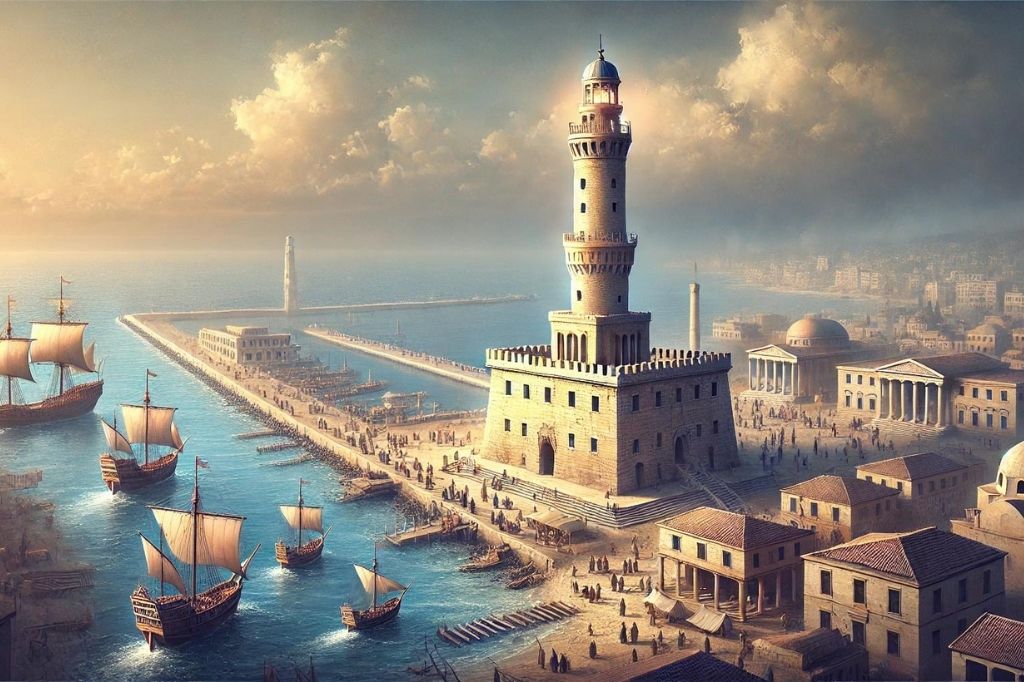Before the coming of present day navigation innovation, sailors depended on the stars, shorelines, and an organization of transcending reference points known as lighthouses to direct their excursions across slippery waters. These ancient designs accomplished something beyond enlighten the evening; they filled in as images of wellbeing, mechanical ability, and human creativity. In this article, we investigate the critical The Role of Ancient Lighthouses in Maritime Navigation, digging into how these notorious landmarks helped shape early maritime investigation and exchange.
Origins and Engineering Innovation
The historical backdrop of lighthouses extends back to ancient times, with the earliest realized beacon being the Pharos of Alexandria, Egypt. Implicit the third century BCE on the little island of Pharos, it was quite possibly of the tallest man-made structure on the planet at that point and a wonder of designing. This monumental design was built with a mix of limestone and light-hued stone, including a heater at the top that consumed wood and coal to emanate light.
The Pharos of Alexandria filled in as a navigational guide as well as an image of political power and mechanical accomplishment of the Ptolemaic Realm. Its plan motivated ensuing lighthouses and set norms in beacon development that reverberated as the centuries progressed.
Compositionally, ancient lighthouses were ordinarily worked to endure brutal ocean conditions and were many times a blend of excellence and usefulness. Their essential positions at critical maritime courses highlighted their significance in supporting navigation, discouraging privateers, and guaranteeing safe section into harbors.
Technological Perspectives and Enlightenment Techniques
The essential capability of a beacon is to act as a navigational guide, emanating light from an arrangement of lights and focal points to direct sailors. In ancient times, this was accomplished through open flames or lights, frequently improved by early types of intelligent innovation.
Advancements in brightening accompanied improvements in fuel sources and optical innovation. Early lighthouses utilized wood and coal, yet over the long haul, olive oil, sesame oil, and whale oil became prevalent because of their smokeless quality and more brilliant light. The utilization of mirrors and cleaned metal sheets to mirror light additionally expanded the adequacy of these lighthouses.
The development of beacon enlightenment was significant in expanding the scope of light transmitted, making lighthouses solid guides to navigation during the evening and times of decreased perceivability. These innovative progressions essentially decreased wrecks and worked with more secure and more effective maritime travel.
Cultural Importance and Symbolism
Lighthouses were useful designs as well as held critical social and representative significance. They were frequently viewed as images of trust, direction, and safe return. Numerous ancient lighthouses were situated close to sacrosanct destinations and were entwined with the folklore and religion of the ocean.
For instance, the Pharos of Alexandria was connected to the ocean god Poseidon, building up its role as an actual signal as well as a profound defender. This mix of utility and otherworldliness featured the double roles of lighthouses in ancient social orders.
In addition, lighthouses were commended in writing and workmanship, demonstrating their significant effect on ancient societies. They were worshipped as accomplishments of designing and as fundamental components of ancient maritime foundation, adding to the financial flourishing by supporting expanded ocean journeys and worldwide exchange.
Legacy and Present day Reflections
The tradition of ancient lighthouses reaches out into current times, affecting contemporary maritime navigation and beacon development. Numerous cutting edge lighthouses actually utilize the fundamental standards laid out by their ancient partners, however with trend setting innovations like electric lights and sunlight based power.
The persevering through allure of lighthouses in writing, film, and mainstream society verifies their enduring importance. Current recreations and safeguarding endeavors of ancient lighthouses additionally address their getting through charm and proceeded with significance in maritime wellbeing.
Today, ancient lighthouses are praised for their verifiable worth and as landmarks to human creativity and the soul of investigation. They help us to remember our common maritime legacy and the ageless human undertaking to overcome the seas.
From directing ancient sailors to moving current innovation, the role of lighthouses in maritime navigation is a demonstration of the creativity of past developments and their effect on our reality. The account of The Role of Ancient Lighthouses in Maritime Navigation isn’t simply a story of mechanical accomplishment yet in addition an account of human versatility and development.


